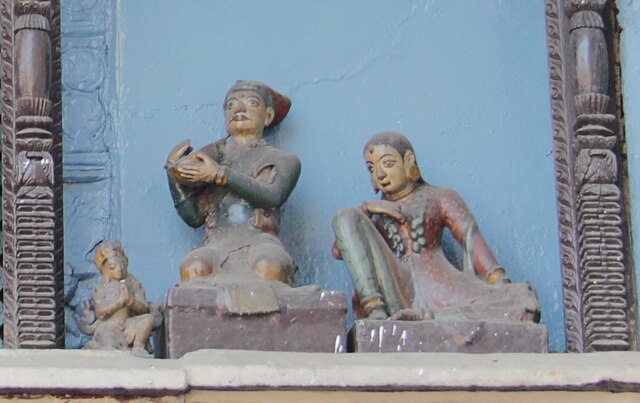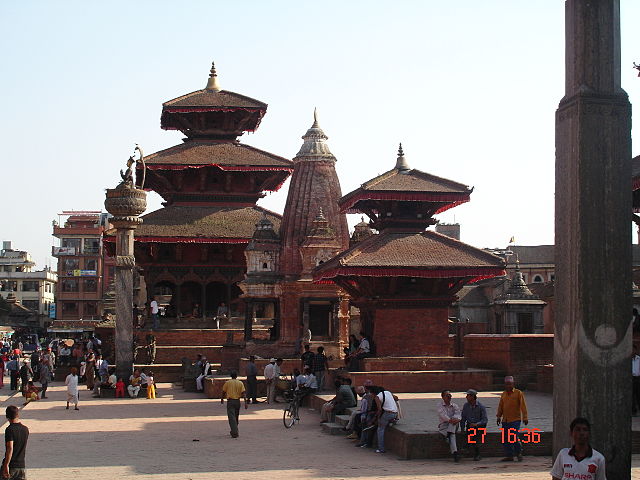Pratap Malla was a Malla king and the eighth King of Kantipur from 1641 until his death in 1674. He attempted to unify Kathmandu Valley by conquering Lalitpur and Bhaktapur, but failed in the effort. He was successful in extending and securing the borders of Kantipur and was responsible for the monopoly over trade with Tibet. The resulting prosperity led to the construction of the majority of the buildings around Durbar Square during his reign. His reign is seen as a cultural and economic high point of the Malla dynasty.
Pratap Malla, playing a lute, and his queen, seen in the niche above the Hanuman Dhoka Palace gate
Parthibendra Malla, son of Pratap Malla, ruled Kathmandu from 1680–1687 CE.
Kabindrapur built by Pratap Malla.
Statue of Pratap Malla with his wives and sons at Hanuman Dhoka Palace.
The Malla dynasty also known as the Malla confederacy, was the ruling dynasty of the Kathmandu Valley in Nepal from 1201 to 1779. This dynasty was founded by Arideva Malla. Though the latter Mallas were regarded as belonging to the Raghuvamsha dynasty, they were also seen as continuations and descendants of the Licchavi dynasty. Later Malla kings also traced one section of their lineage from Nanyadeva, the founder of the Karnat dynasty of Mithila. The term malla means wrestler in Sanskrit. The first use of the word malla in the Kathmandu Valley began in 1201.
Portrait of Jayasthiti Malla (r. 1382–1395)
Portrait of King Bhupatindra Malla (r. 1696–1722)
Bhaskar Malla of Kathmandu (r. 1700–1714) dressed in Mughal fashion
Near the palace of the Malla dynasty rulers in Lalitpur with pillar and statue of king Yoga Narendra Malla (Lalitpur).








